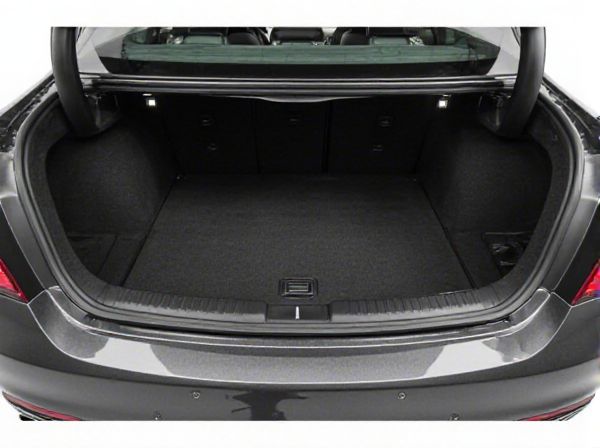
Photo illustration: Remote Release vs Manual Release
Remote release systems provide the convenience of activating a mechanism from a distance, enhancing safety and efficiency in various industrial and automotive applications. Manual release requires physical interaction, which can be necessary for precise control or in environments where remote technology is impractical. Understanding the differences helps you choose the best option based on accessibility, speed, and operational context.
Table of Comparison
| Feature | Remote Release Trunk | Manual Release Trunk |
|---|---|---|
| Activation Method | Remote key fob or smartphone app | Physical lever or button inside the car |
| Convenience | High - opens trunk without approaching the car | Low - requires manually unlocking the trunk |
| Security | Integrated with vehicle security system | Depends on physical locks and keys |
| Cost | Higher due to electronic components | Lower, basic mechanical parts |
| Maintenance | May require electronic diagnostics and repairs | Minimal, mainly mechanical upkeep |
| Power Dependency | Requires vehicle battery power | Operates without electrical power |
| Emergency Access | May be limited if electronic system fails | Always available physically |
Introduction to Release Mechanisms
Remote release mechanisms enable the activation of devices or systems from a distance using electronic or wireless signals, enhancing safety and convenience in various applications such as emergency evacuation or equipment deployment. Manual release requires physical interaction, involving direct human intervention to trigger the mechanism, often relying on levers, buttons, or pulls. Choosing between remote and manual release depends on operational requirements, environment, and the need for prompt or controlled activation.
What is Remote Release?
Remote Release is a technology that allows devices or systems to be activated or deactivated from a distance using wireless communication methods such as Bluetooth, Wi-Fi, or RF signals. It enhances convenience and security by enabling users to control access or operation without physical contact, commonly used in smart home systems, automotive locks, and industrial equipment. This contrasts with Manual Release, which requires direct human interaction, often involving mechanical or physical manipulation to operate the device.
What is Manual Release?
Manual release refers to the physical process of activating a mechanism or system by hand, typically involving tools or direct human intervention. It requires an individual to disengage or unlock components manually, often used in emergency situations or when automated systems fail. This hands-on approach ensures controlled and immediate action without relying on electronic or remote controls.
Key Differences Between Remote and Manual Release
Remote release enables users to activate a device or system from a distance using wireless communication, enhancing convenience and efficiency. Manual release requires physical intervention to operate, often involving a direct mechanical action or push button. Key differences include control method, response time, and situational flexibility, with remote release offering faster activation and broader accessibility compared to manual release.
Advantages of Remote Release
Remote release offers enhanced convenience by allowing users to access or unlock systems from a distance, eliminating the need for physical presence. It improves security through real-time monitoring and control, reducing risks associated with unauthorized manual interventions. This technology increases operational efficiency by enabling faster responses and reducing downtime in critical applications.
Benefits of Manual Release
Manual release offers precise control over the operation, enabling operators to adjust settings in real-time based on immediate feedback. This method reduces the risk of unintended activations or errors often associated with automated systems, enhancing safety and reliability. Furthermore, manual release systems require minimal technical infrastructure, lowering maintenance costs and simplifying troubleshooting processes.
Use Cases: When to Choose Remote Release
Remote Release is ideal for scenarios requiring rapid, centralized control over numerous devices, such as in large IT infrastructures or distributed workforces where physical access is limited. It minimizes downtime by enabling administrators to deploy updates or rollback changes instantly without onsite intervention. Manual Release suits environments where hands-on verification and local testing are critical before deployment, such as in sensitive or isolated systems with high compliance demands.
Use Cases: When Manual Release is Preferable
Manual release is preferable in highly secure environments where human verification is critical to prevent unauthorized access or errors. It is ideal for situations requiring precise control over transaction timing, such as high-value payments or sensitive data transfers where automated systems might pose risks. Manual release also suits workflows needing compliance with strict audit trails and regulatory standards, ensuring accountability and traceability.
Security Considerations for Both Methods
Remote release systems enhance security by allowing controlled access through encrypted communication and multi-factor authentication, reducing the risk of unauthorized entries. Manual release relies heavily on physical key control and human oversight, which can be vulnerable to theft or duplication but offers immediate tactile feedback for verification. Both methods require strict access policies and regular audits to prevent breaches and ensure compliance with security protocols.
Choosing the Right Release Solution for Your Needs
Selecting the appropriate release solution depends on the specific operational requirements and safety considerations of your project. Remote releases offer enhanced control and safety by enabling activation from a distance, ideal for hazardous environments or complex installations, while manual releases provide simplicity and cost-effectiveness for straightforward applications. Analyzing factors such as accessibility, response time, and environmental conditions ensures the release mechanism aligns perfectly with your technical needs and budget constraints.
 caratoz.com
caratoz.com